
“There was a US government policy to assassinate and silence John Lennon which was conducted by the same people who murdered other political figures and musicians in the past eighteen years,” said a source who worked with the CIA for over thirty years.
“The federal government has maintained active programs to eliminate rock musicians and disrupt rock concerts. Senator Frank Church’s Committee hearings in 1975 and the FBI Cointel-Programs clearly document the intent to break up any gatherings of the “new left”.
“Nothing brought anti-war demonstrators together with political messages more effectively than music festivals,” he stated.
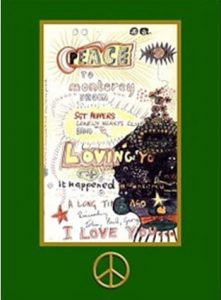 In February 1967 The Beatles contributed the above drawing to an International Pop Music Festival
In February 1967 The Beatles contributed the above drawing to an International Pop Music Festival
Having the facility to review US Government dogma there is hard evidence the CIA assigned agents to ‘investigate the ‘music industry.’ After the murders of Tim Buckley, Jim Croce, and Mama Cass Elliot, more information surfaced about earlier mysterious deaths of Jimi Hendrix, Jim Morrison, and Janis Joplin.
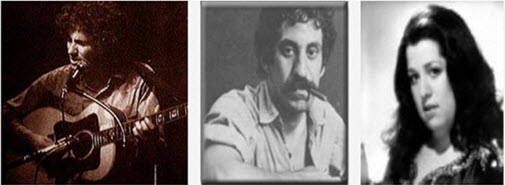
From left to right: Tom Buckley, Jim Croce, Mama Cass Elliot
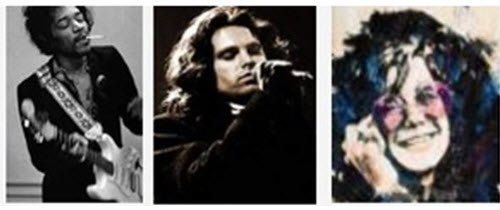
From left to right: Jimi Hendrix, Jim Morrison, Janis Joplin
When one looks at some of the rock musicians who have died since the Huston Plan and the FBI Cointel-Program were activated it shows a clear policy respective US Governments have taken. If these people had been taking any kinds of drugs, there is the distinct possibility that specific poisons were added to their drugs, enough to be fatal, to make it appear that they had died from a simple ‘overdose.’
John Lennon, Paul Kossoff, John Bonham, Elvis Presley, Jim Reeves, Steve Parson, Buddy Holly, Berry Oakley, Bob Marley, Otis Redding , Tim Buckley, Sal Mineo, Brian Jones, Jim Croce, Harry Chapin, Jimi Hendrix, Richard Earina, Brian Epstein, Janis Joplin, Lenny Bruce, Jim Morrison, Larry Williams, Michael Jeffery, Duane Allman, Bon Scott, AC/DC Mama Cass Elliot, Richie Valens, Rod McKernan, ‘Pig Pen’ of the Grateful Dead, Gram Parsons, J. P. Richardson, Phil Oakes, Ronnie Van Zandt , Marc Bolan, Steve Gains, Donald Rex Jackson, Keith Moon, Sid Vicious and many more.
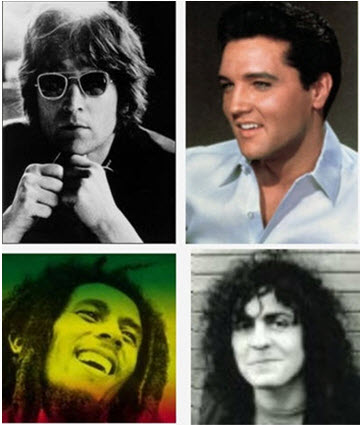
Above: John Lennon and Elvis Presley. Below: Bob Marley and Marc Bolan.
The murder of John Lennon was the most daring
Both the date of Lennon’s murder and the careful selection of this particular victim are very important.
Six weeks after Lennon’s death, Ronald Reagan would become President. Reagan and his soon-to-be-appointed cabinet were prepared to build up the Pentagon war machine and increase the potential for war against the USSR.
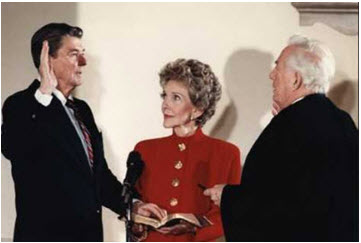
Reagan being inaugurated as president at the White House, January 1985
The first strike would fall on small countries like El Salvador and Guatemala. Lennon, alone, was the only man (even without his fellow Beatles) who had the ability to draw out one million anti-war protestors in any given city within 24 hours, if he opposed those war policies.
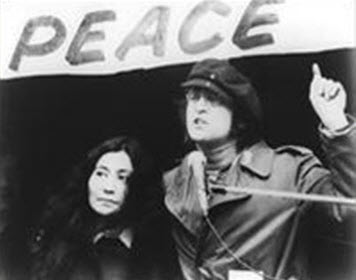
John Lennon was a spiritual force. He was a giant, like Gandhi, a man who wrote about peace and brotherly love. He taught an entire generation to think for themselves and to challenge authority.
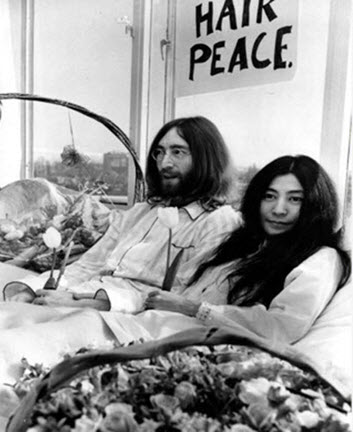
Peace protest – a seven day vigil in bed.
Lennon and the Beatles’ songs shout out the inequalities life and the messages of change.
Change was a threat to the long-time status quo that Reagan’s team exemplified.
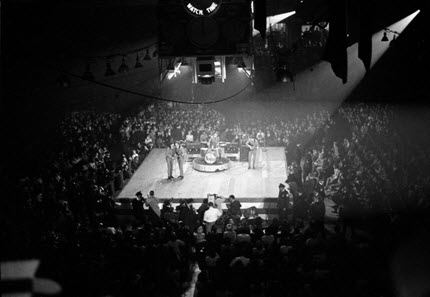
He was coming out once more. His album was cut. He was preparing to be part of the world, a world which was for millions considered a worse place since the time he had withdrawn with his family. It was a sure bet Lennon would react and become a social activist again. That was the threat. Lennon realized that there was danger coming back into public view. He took that dangerous chance.
The common assumption is that Mark David Chapman, arrested the moment he killed John Lennon, was acting out his personal love-hate relationship with Lennon. Single crimes of passion are easy to explain and easy to solve.
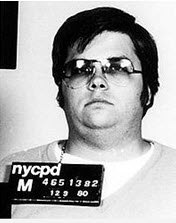
Mugshot of Mark Chapman
When someone is gunned down who is controversial, has political enemies, is hated by wealthy and well-organized religious movements, and is an open opponent of government policies at home and abroad, that kind of murder requires much more inquiry into the background of the assassin.
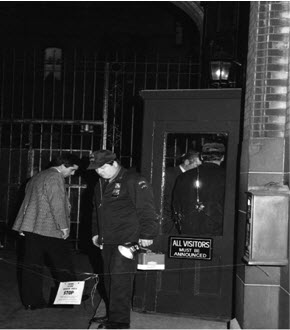
Where the shots were fired.
The conclusions about the murder motive may turn out to be simple. Yet, in every political assassination since 1963, there were always more unanswered questions that led to a broader supposition of intention to kill by a group of people rather than one single individual.
There is always a clue to the larger conspiracy to murder. There are necessary connecting links in every assassination conspiracy.
If any link of that chain falls apart and becomes exposed, the parts of the larger plot are more visible. When every element of that chain holds together and is present in the evidence and testimony regarding any particular murder, there has to be a larger conspiracy.
The most important link in that chain is the selected decoy or ‘patsy’. Whoever is arrested at the scene of the crime, to the exclusion of other suspicious persons, becomes the ‘assassin.’
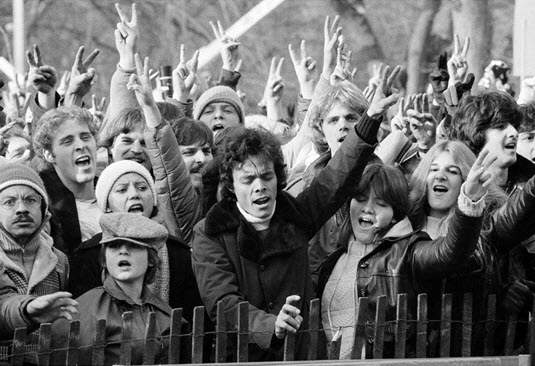
Photo of vigil for John Lennon
This single person must serve a purpose, namely, to divert all attention away from those people who have armed him and located him at the scene of the crime. Letters and diaries are always present and easily located to support the predetermined cover story. They provide a ‘motive’ and are the glue that cements (we are told) the “loner” to his single purpose.
In preparation for his “act”, the decoy or patsy is moved across countries or overseas, traveling and staying at safe houses. He has no friends, no jobs, no means of support while at the same time staying at fancy hotels, spending lots of money, getting phone messages, and meeting lots of people.
Very few people have the money to spend years in transit like these patsies, whose chances of being in selected locations at the precise moment their victim is murdered are minute and impossible without assistance.
Mark Chapman, the man convicted of killing John Lennon, came from a conservative military family who had moved from Fort Worth, Texas to Florida. He had become a ‘Jesus Freak’ at the time Lennon and the Beatles were getting death threats during the anti-war period.
Joining this movement while supposedly loving and admiring Lennon was a gross contradiction, for the religious fundamentalists were furious that Lennon considered himself better known and loved than Jesus.
DeKalb County, Georgia, just to the east of Atlanta, figures prominently in Chapman’s life as it had some years earlier in that of Martin Luther King.

In 1977 in a court affidavit, Robert Byron Watson, a former employee of Magellan’s Art Gallery, Atlanta, named several citizens as having planned and bragged about the ‘future murder of Reverend Martin Luther King.’ King’s death came just one week after the plans were discussed.
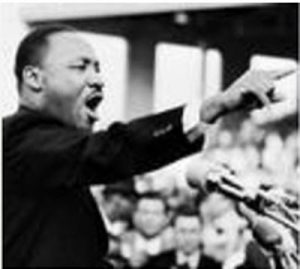
Martin Luther King preaching to the people
These same people also talked about murdering Senator Robert Kennedy.
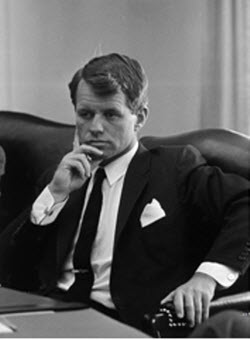
Senator Kennedy
Chapman attended DeKalb Junior College in the area where these kinds of plans were laid and such political anger was being vented. From DeKalb County, Chapman was sent to Beirut, Lebanon. He was handed the funds both ways.
Beirut was the centre for George Habash and CIA assassination teams also identified in the Watson testimony before the House Select Committee on Assassinations in 1977-78.
On March 31, 1981, United Press International exposed the connection of “military training in a guerrilla camp” in Beirut, Lebanon to “worldwide Nazi ties.” After six months in Lebanon, Chapman went to Fort Chaffee, Arkansas to work with Vietnam refugees recently arrived from Southeast Asia. Members of the CIA were with him at this military base.
William Colby’s Vietnam Phoenix program, staffed with agents who intensely hated the anti-war, social activists like John Lennon, had both the intent and the means to move persons like Chapman to their training camps and then to specific places planned as sites for future assassinations.
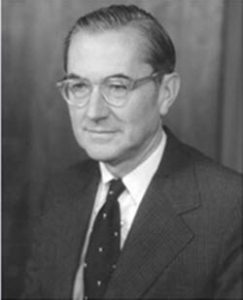
William Colby
Colby came back to the U.S. to become Director of the C.I.A. at a time (1973) when ‘Operation Chaos’ was in full swing against the hippies, rock musicians, and anti-war protestors. Many of them were killed or otherwise neutralized. From Fort Chaffee, Arkansas, Chapman moved to Lookout Mountain, Tennessee to attend Presbyterian College.
Martin Luther King, a victim of plans made in DeKalb County, Georgia, was murdered in Memphis, Tennessee. Senator Howard Baker from Tennessee and CIA Director William Colby were making deals to cover up Watergate crimes in 1974-75, year before Chapman moved to Tennessee.
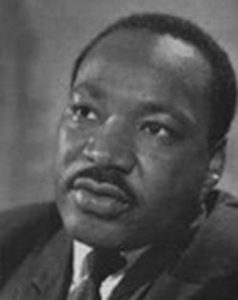
Martin Luther King
According to news reports, Chapman ‘fled’ Tennessee to Hawaii in 1976. His earliest arrest records indicated he had committed crimes in Florida, but the authorities later blamed these crimes on another person, excusing the mix-up as a ‘computer mistake.’
Many patsies and decoys have earlier arrest records that are used to keep them silent and actively cooperative for fear of going to jail. The question that springs to mind is whether there was any connection between the Florida identification and the reason for Chapman’s flight to Hawaii?
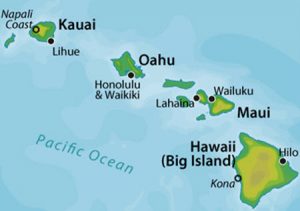
Hawaii has been the scene of many clandestine operations. Many CIA Vietnamese and members of the Special Forces, now safely removed from Vietnam, were assembled in Hawaii.
The Nugan Hand Bank, an Australian conduit for CIA ‘black money’, actually assassination funds, kept a branch in Hawaii. Herbert Mullen, convicted of mass murders in California, appeared perfectly normal until he was sent to a military hospital in Hawaii. It was in Maui that he went through his “religious thinking” and evolved as a killer. Ed Sanders, author of The Family, a book about the Manson Family, obtained documents regarding a mysterious trip Mullen took to Hawaii before he later became a programmed killer.
The years from 1976 to 1978 in Chapman’s biography are still vague and murky: two years of limited employment and “mental treatment.” Allegedly, he was in the hospital for a mental breakdown. On the other hand, if there were any evidence of mental instability, would not his permit application to buy the murder weapon have been denied?
There were many years, months, days when Chapman could have been mentally programmed to become like the ‘Manchurian Candidate,’ specifically to murder John Lennon, if and when he re-entered public life. Lennon was not a threat until the U.S. was getting close to another war. Subsequently, Chapman took a long ‘vacation,’ including a trip around the world. During this voyage, he made a trip to Switzerland to meet a pal from DeKalb County, Georgia, the same man who earlier had arranged the original trip to Lebanon. The journey culminated in London with a rare visit to a live Lennon concert.
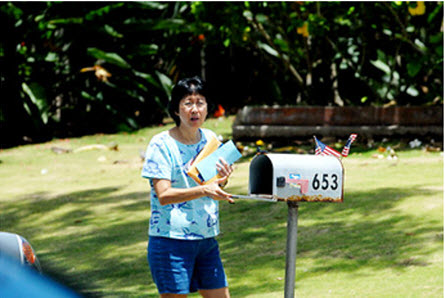
First photo of David Chapman’s wife after shooting
Chapman’s wife, who worked for a travel agency, ‘arranged his itinerary.’ The source of the money for his fare, hotels, food, concerts, has never been identified, although Pacific Holding Ltd., a “tourism” company formed by the CIA and Special Forces, may be implicated. Both groups had funds to hire assassination teams.
When Chapman left his job in Hawaii, October 23, 1980, he flew to Atlanta, GA. From Georgia, he went to New York City with the intention of killing John Lennon but was apparently able to resist the “master inside himself”, a conflict he describes, and returned to Hawaii. Before long, however, Hawaii was again behind him, and Chapman arrived in New York on December 5, 1980, with the specific plan to kill John Lennon, which he did three days later. The common denominators in all these cases are those links in the conspiracy chain which show the relevant questions to be asked:
- Were there other persons along with Chapman shooting at Lennon to make sure he died?
- Who fled the scene in a hurry, never sought again by law enforcement agencies?
- Why did the New York police adamantly refuse to accept pictures of Chapman taken autographing an album earlier in the evening of the murder?
- Why were they donated to a newspaper after the police refused to accept them?
- When Chapman’s wife was called by the New York Police, why did they instruct her, “Don’t release any picture of him.”?
- How could Miami Police issue an erroneous description of a criminal record having the same last name, date of birth, race, and approximate height as the slaying suspect?
- Can one ever see the picture of the Florida suspect?
- If Chapman was treated for mental illness in Hawaii, how did he procure the weapon in Hawaii?
- How did Chapman transport the gun from the Island to the Mainland? (This question was dismissed by the Federal Bureau of Alcohol, Tobacco, and Firearms agents, who said, “No investigation was in progress.”)
- Money was never a problem for this wanderer. He and his wife lived in a $400 a month apartment and were able to support his hobby of collecting expensive works of art. Owning original Norman Rockwell lithographs worth $7,500, and traveling around the world aren’t impossible if there is some kind of occupation that provides the money for these luxuries.
- Were there other persons along with Chapman shooting at Lennon to make sure he died?
- Who fled the scene in a hurry, never sought again by law enforcement agencies?
- Why did the New York police adamantly refuse to accept pictures of Chapman taken autographing an album earlier in the evening of the murder?
- Why were they donated to a newspaper after the police refused to accept them?
- When Chapman’s wife was called by the New York Police, why did they instruct her, “Don’t release any picture of him.”?
- How could Miami Police issue an erroneous description of a criminal record having the same last name, date of birth, race, and approximate height as the slaying suspect?
- Can one ever see the picture of the Florida suspect?
- If Chapman was treated for mental illness in Hawaii, how did he procure the weapon in Hawaii?
- How did Chapman transport the gun from the Island to the Mainland? (This question was dismissed by the Federal Bureau of Alcohol, Tobacco, and Firearms agents, who said, “No investigation was in progress.”)
- Money was never a problem for this wanderer. He and his wife lived in a $400 a month apartment and were able to support his hobby of collecting expensive works of art. Owning original Norman Rockwell lithographs worth $7,500, and traveling around the world aren’t impossible if there is some kind of occupation that provides the money for these luxuries.
If Chapman wrote John Lennon’ on his work sheet on October 23, 1980, it would seem impossible for someone not to notice this message until the day after Lennon was murdered. Employment log sheets are usually added up regularly to determine the hours worked and the amount of pay checks. It is more probable that Chapman wrote this name at that time so that his cover story, his defence after the murder, would be his mental identification with John Lennon.
Chapman’s intention to find Lennon, as just another adoring Beatle fan, must be separated from the question of who transported him from Hawaii to Georgia to New York, back to Hawaii, and back again to New York, with lots of cash, and with the sole purpose of killing Lennon.
One is certainly impressed that Mark David Chapman could be such a ‘good shot’ with ‘no military background at all.’ But Chapman had been trained to shoot. He had learned to become a security guard in Georgia before his trips to Lebanon and to the many countries where he could have been instructed in killing.
What about Ft. Chaffee? Why not shooting practice in Tennessee? What about military bases in Hawaii?
Like all the other ‘loner’ drifters, Chapman stayed at expensive hotels. His last evening before killing Lennon was spent at the Sheraton Centre Hotel in New York. He was carrying more than $2,000 in cash along with his credit cards.
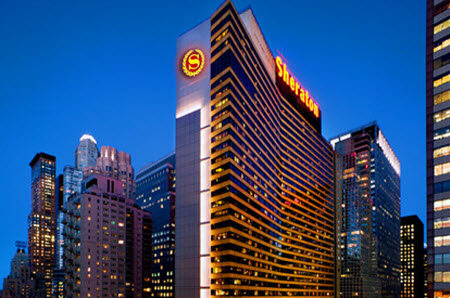
Where did he get these cards, and on what basis was the money earned and saved to establish credit to qualify for these cards?
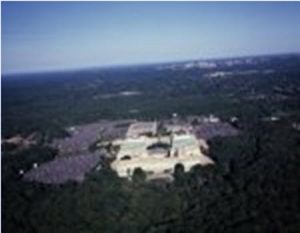
Aerial view of CIA Headquarters
When one looks at the list of famous ‘pop stars’ mysteriously dead in drug overdoses, plane crashes, car accidents and the statement from an ex-CIA coupled with documentary evidence from CIA Headquarters at Langley one can finally understand why each time Mark Chapman requests parole, it is denied.
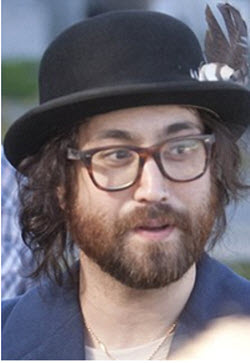
Sean Lennon
Sean Lennon has stated on many occasions that he is not convinced his father was ‘simply murdered by a fan’. On the evidence that view seems correct but as in all sudden and mysterious death involving controversial figures there will always be room for speculation. However, of late the US has made its position clear. They set out and successfully murdered Osama Bin Laden and other terrorists.
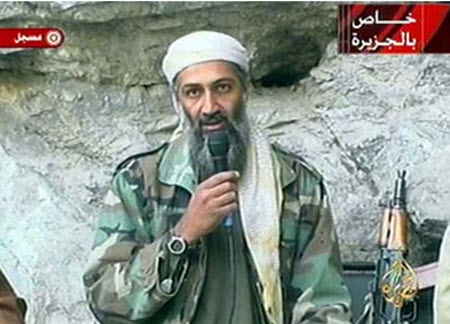
The terrorist threat in the days of Lennon, Hendrix, et al, did not exist.
They were the threat………
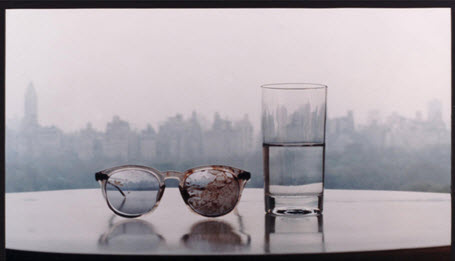
NB: Some images retrieved from Google, will remove at owner’s request.
